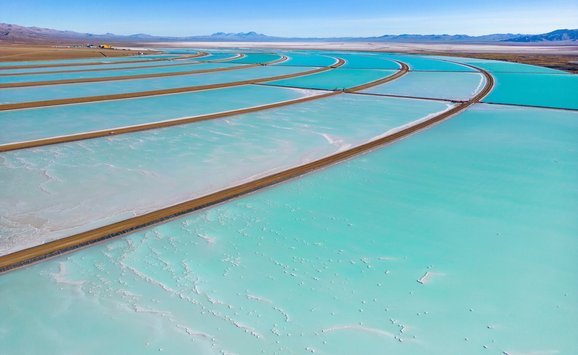The oil price disruptions of the 1970s and the increasing vulnerability of oil importers to future energy shocks have focused attention on a range of devices, such as strategic petroleum reserves, import tariffs, oil substitutes, and international sharing agreements in the event of sudden oil shortfalls. These instruments by and large fall on the demand side. While supply-side factors are not wholly neglected, an important element of the problem has been largely overlooked—how to bring about additional oil supplies in non-OPEC developing countries. Indeed, attempts to explore for and develop petroleum resources in non-OPEC developing nations are in the interest of both the developing and the developed countries.
The developing nations
In the developing nations, the critical importance of energy to economic development is underscored by the increasing shift from traditional fuels to commercial energy dominated by petroleum and natural gas. These fuels provide almost all commercial energy used in transportation and a major share of the energy used in the industrial, household, and electricity-generation sectors of most developing countries. Moreover, oil product consumption is still growing rapidly in most of these countries. For example, in the countries that are net oil importers, the annual consumption growth rate of 9.4 percent in the period between 1960 and 1973 declined only to 7.7 percent between 1973 and 1978. Developing indigenous sources of commercial energy also provides an opportunity for these countries to reduce their enormous financial debt (largely with Western banks) and save foreign exchange for other investment needs.
The industrialized nations
Energy development in the Third World also enhances the energy security of the industrialized nations. Diversifying the sources of oil could reduce the developed economies' vulnerability to oil supply disruptions. Moreover, increments to the world oil supply would foster price and output flexibility in the structure of international oil markets, and expanded petroleum supplies from non-OPEC developing countries could create excess production capacity to be drawn upon in the event of a disruption. In brief, developing oil in these countries could well generate large social benefits for all oil importers.
A skewed pattern
Prior to the early 1970s, the discovery of low-cost Middle Eastern crude kept oil prices low and generally diverted resources from investment in higher-cost supply areas. Thus, since the oil price hikes, known reserves in developing countries that were uneconomic because of their small size or high transport costs in principle should have been developed, and exploration in areas adjacent to known reserves should have been increased. Similarly, we should have seen exploration in new areas. By and large, this did not happen. Indeed, the pattern of petroleum exploration and development is skewed away from these countries. Large international petroleum companies have tended to concentrate exploration in sedimentary basins that have been developed previously, particularly in North America. Although exploration worldwide reached record levels at the end of the 1970s, a relatively small amount occurred in the oil-importing developing countries. Exploratory drilling statistics suggest an overall trend. For example, 390 exploratory wells were drilled in all such countries in 1978, up by 15 percent from 1970. In the United States and Canada, however, 13,821 exploratory wells were drilled in 1978, a 49 percent increase over the 1970 level.
To be sure, enhancing Third World oil production is generating a great deal of interest, but mostly among a relatively small group of energy analysts. Moreover, analyses of the prospects for boosting production are burdened by two controversial elements of the problem. First, is it geology or politics that dictates the relatively low level of petroleum exploration and development investment in the non-OPEC developing countries? And second, what can be done to stimulate such investment? Is there a need for public sector intervention? And if so, what form of public sector intervention would be be most effective?
On the first issue, one school of thought maintains that the most important determinant of the geographic distribution of world oil exploration and production is the location of so-called giant fields—petroleum deposits of at least 500 million barrels. Another group asserts that political or governmental conflicts dominate the purely geologic factors. But both arguments lose sight of the fact that a continuum of promising petroleum resources exists throughout the world, and that the commercial viability of these deposits depends on a diverse set of factors, inc1uding resource potential, economics, politics and institutions.
Oil production potential
Any given area exhibits a wide range of estimates of undiscovered petroleum deposits, primarily because assessment of oil potential is based on geologists' imperfect and partially subjective judgments. Furthermore, knowledge of an area's source potential depends strongly on amount and quality of past explorations in that area.
Keeping in mind, then, the inherent "softness" of estimates in general, still it is noteworthy that some geologists believe that non-OPEC developing countries contain a significant proportion of the world's undiscovered petroleum; of a total 30 million square miles of promising sedimentary basins, they are thought to account for 13 million square miles. A World Bank study concludes that "vast sedimentary areas that probably contain 75 percent of potential petroleum reserves in Latin America, 82 percent of those in Africa, and 85 percent of those in Asia and the Far East, are yet to be intensively prospected and developed." Drilling density (the number of exploratory wells drilled per thousand square kilometers of prospective area) in non-OPEC developing countries, however, has been a fraction of that in the United States and Canada: while it is likely that the former countries reserves will be in relatively modest pools (true also for future U.S. and Canadian reserves), total amounts could be significant on a global or at least a national scale. Indeed, as U.S. Energy Secretary James Edwards has remarked:
"Our experts estimate that 50 percent of the potential reserves are in countries where only 5 percent of the drilling has been done. . . We ought to be drilling more wells and developing more fields in the developing countries than we are. . . Many of these countries have reserves of oil. They may not be large, but as oil becomes more scarce, they will become more economic to develop, especially for domestic use. . . International oil companies have to start redirecting their sights toward these small—but vital onshore fields in other countries."
Public sector intervention
Regarding the second issue—how to stimulate petroleum exploration and development in these countries—many urge that multilateral institutions such as the World Bank take on the role of honest broker between private international oil firms and non-OPEC developing countries. But there are potential problems lurking within this near-consensus.
This prescription appears to be based on the conventional wisdom that excessive political risk is the primary reason private sector reluctance to commit itself to petroleum investment in these countries. But is such risk as strong a deterrent to foreign investment today as it has been in the past? The threat obviously cannot be wholly downgraded, but casual observation suggests movement in the direction of reduced political risk to companies.
More important, the relationship between developing country governments and foreign enterprise increasingly is symbiotic; both parties have become more pragmatic, recognizing that cooperation can be a positive sum game. In Angola, for example—a nominally Marxist country not even recognized by the United States—U.S. and European firms apparently are willing to invest a large amount of capital in petroleum exploration and development no matter who is in power.
More generally, a shift has begun in the form of petroleum company-host government contracts. In the recent past, host governments were entitled to some share of oil revenues generated by private companies' exploration and production efforts, yet the companies were exposed to the risk of expropriation even before their exploration investments had been fully realized. Now more common are arrangements under which state-owned oil companies increasingly share some of the financial responsibility in the exploration phase, and private foreign companies are contracted to develop promising fields in return for a share of profits earned in production.
Furthermore, the proposed schemes involving public sector intervention do not fully take into account that the petroleum industry is not homogeneous. The private international petroleum companies pursue diverse competitive strategies of direct foreign investment depending on their size and other firm-specific characteristics. A uniform industry wide policy—whether involving an honest-broker scheme, outright financing, or other instruments—through modifying some firms' investment decisions in the "right" direction, also may result in unintended and undesirable consequences vis-a-vis other firms.
And there are considerable differences among the countries involved: some have received more foreign investment in petroleum than others, even after differences in resource endowments have been accounted for. Reasons for this cross-country disparity are unclear, but it may well be that a policy designed to promote petroleum investment in one country is ineffective or even deleterious for another country. In short, a diverse and flexible set of policies may be called for.
Yet a role may exist for, say, a World Bank Energy Affiliate, for beyond strict commercial viability lie possible social benefits that are not captured by the private sector. For example, the energy security of both industrialized and developing countries would be enhanced by developing Third World petroleum resources, the strain on the international monetary system could be relieved, and developing countries' governments could begin to reorient their development plans to other pressing problems if progress were made in the energy area. These all unquestionably are benefits, but they do not normally enter into the public cost—benefit calculations for any individual country, and they are not realized by private petroleum companies. Thus, even if the private gain from some petroleum investments were to be less than production costs, the full social benefits could well surpass them.
Optimal policies
The central policy problem is how to bring about an optimal amount of petroleum investment in non-OPEC developing countries. Specifically, the issue may not be so much how much support is given, but rather what form it takes. As suggested, multilateral financing can be justified on "public benefit" grounds, but it appears that policies emphasizing the private sector and alternative modes for its collaboration with governments will be the most productive.

Author Harry G. Broadman is a fellow in RFF's Center for Energy Policy Research.







